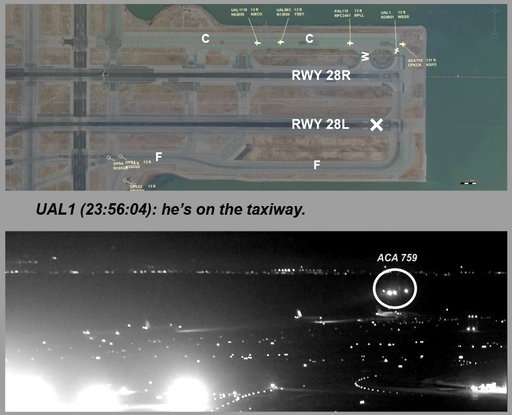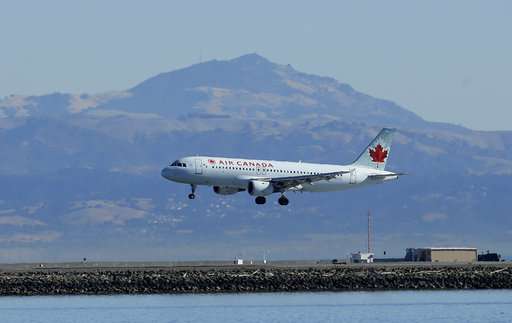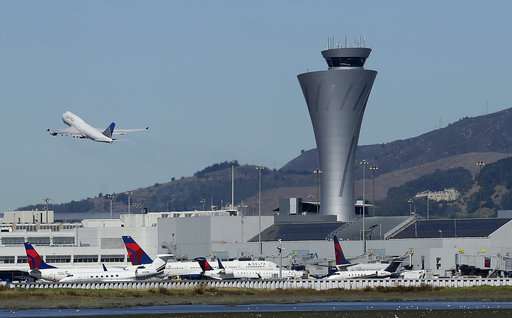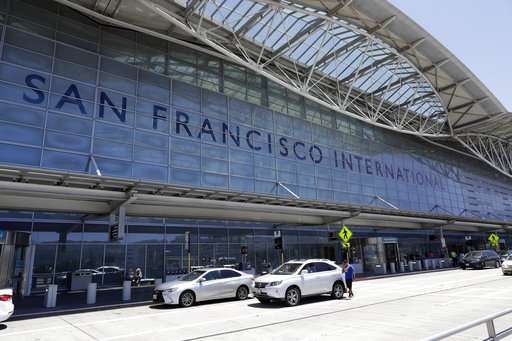NTSB considering technology to avoid accidents, close calls

Safety regulators are recommending the use of technology to help avoid the kind of catastrophic collision that nearly occurred when an Air Canada jetliner zoomed over four taxiing planes full of passengers, coming within 10 to 20 feet of the first one.
"We could not have gotten literally or figuratively any closer to having a major disaster," Bruce Landsberg, a member of the National Transportation Safety Board, said at a hearing Tuesday to determine the cause of the July 2017 incident in San Francisco and make safety recommendations.
The Air Canada pilots were apparently confused because one of two parallel runways was closed and dark before the late-night incident. The crew was seconds from landing on a taxiway containing four other planes that were loaded with passengers and waiting to take off.
NTSB staff is recommending adapting technology used to track ground vehicles so that it could warn pilots and air traffic controllers if a plane is not aimed at the correct runway. They also recommend that Canada adopt new regulations to combat pilot fatigue on late-night flights.
The board was expected to vote on the recommendations and determine probable cause of the incident before adjourning the hearing in Washington, D.C.
The Air Canada crew was cleared to land on 28R, to the right of 28L. According to a preliminary NTSB report , the pilots thought the lighted runway was 28L—not theirs—and they aimed their jet to land to the right of that, on a parallel taxiway where the other planes were waiting to take off.

According to the NTSB, the pilots told investigators that they didn't see planes on the taxiway, but that something did not look right.
A United Airlines pilot in one of the planes warned air traffic controllers about the onrushing Air Canada jet, and pilots on a Philippine Airlines jet switched o
The Air Canada pilots were apparently confused because one of two parallel runways was closed and dark before the late-night incident. The crew was seconds from landing on a taxiway containing four other planes that were loaded with passengers and waiting to take off.
NTSB staff is recommending adapting technology used to track ground vehicles so that it could warn pilots and air traffic controllers if a plane is not aimed at the correct runway. They also recommend that Canada adopt new regulations to combat pilot fatigue on late-night flights.
The board was expected to vote on the recommendations and determine probable cause of the incident before adjourning the hearing in Washington, D.C.
The Air Canada crew was cleared to land on 28R, to the right of 28L. According to a preliminary NTSB report , the pilots thought the lighted runway was 28L—not theirs—and they aimed their jet to land to the right of that, on a parallel taxiway where the other planes were waiting to take off.

According to the NTSB, the pilots told investigators that they didn't see planes on the taxiway, but that something did not look right.
A United Airlines pilot in one of the planes warned air traffic controllers about the onrushing Air Canada jet, and pilots on a Philippine Airlines jet switched on their landing lights in an apparent warning maneuver.
The Air Canada pilots abandoned the landing and pulled their plane up. An NTSB staff member said Tuesday that they calculated the plane flew 10 feet to 20 feet above the first of the four waiting jetliners, then circled and returned for a safe landing.

Both pilots of the Airbus A320, which was arriving from Toronto, were experienced. The captain, who was flying the plane, had more than 20,000 hours of flying time, and the co-pilot had about 10,000 hours.
In May, federal officials blamed pilot error for three other close calls in the previous 16 months at the San Francisco airport. Pilots say that the airport, with parallel runways close to each other, requires special attention during landings.
The Air Canada incident led the Federal Aviation Administration to issue new rules for the airport covering nighttime landings when one of the runways is closed and better late-night control-tower staffing.

© 2018 The Associated Press. All rights reserved.



















